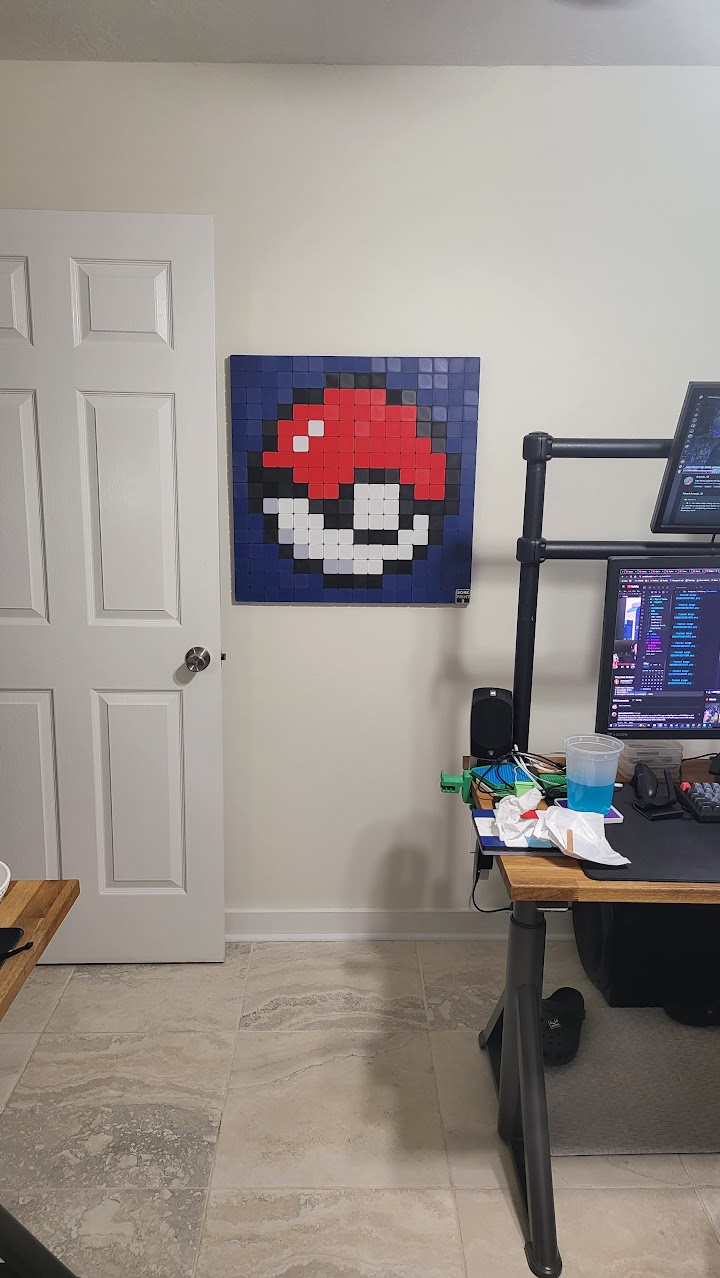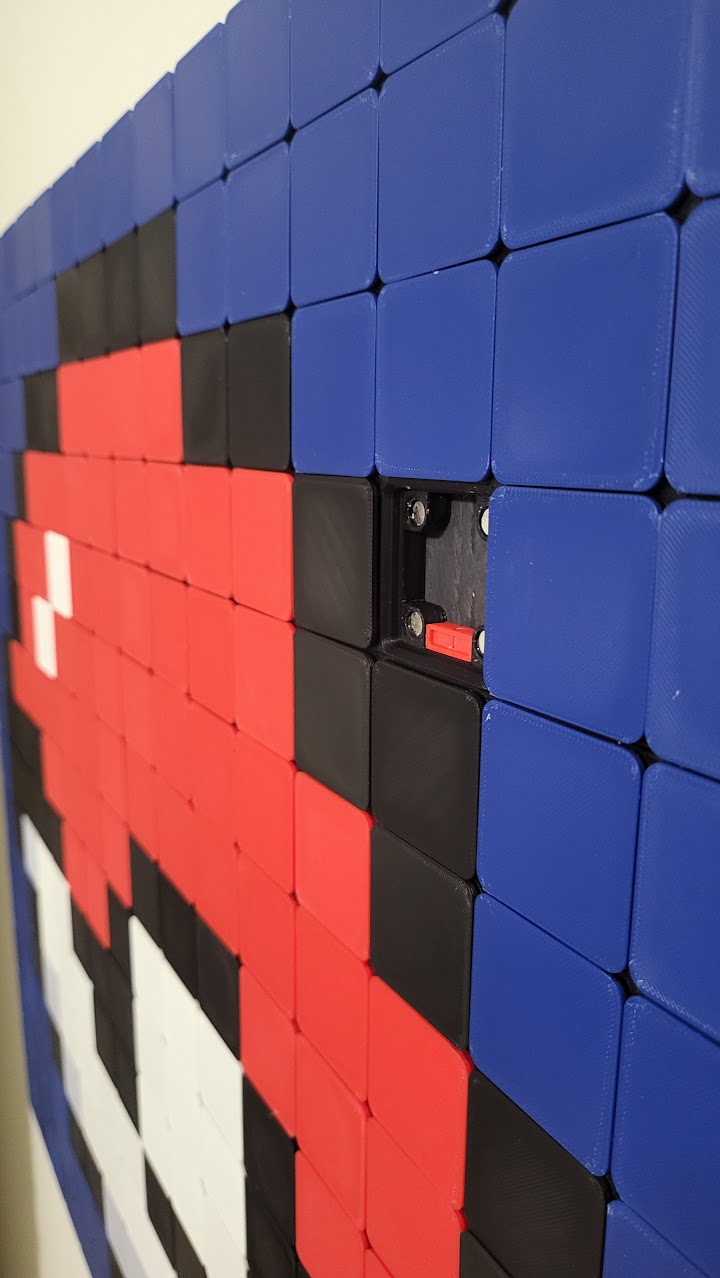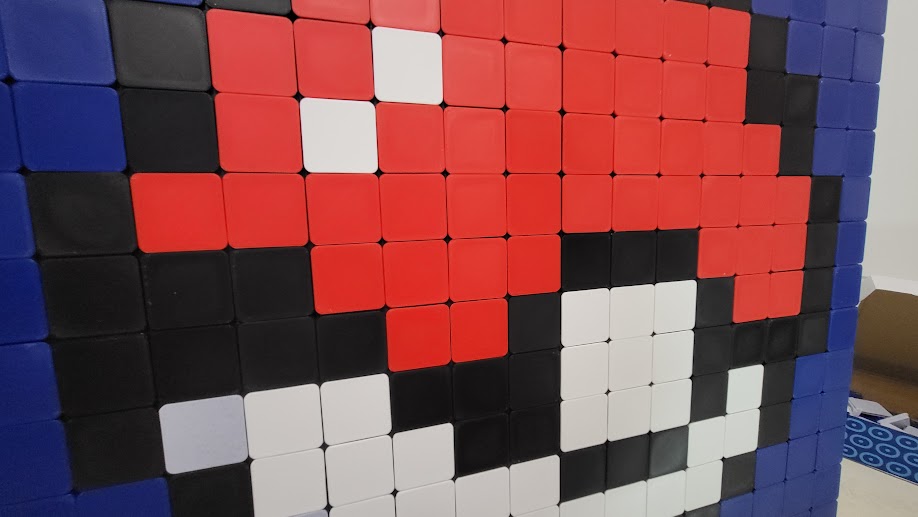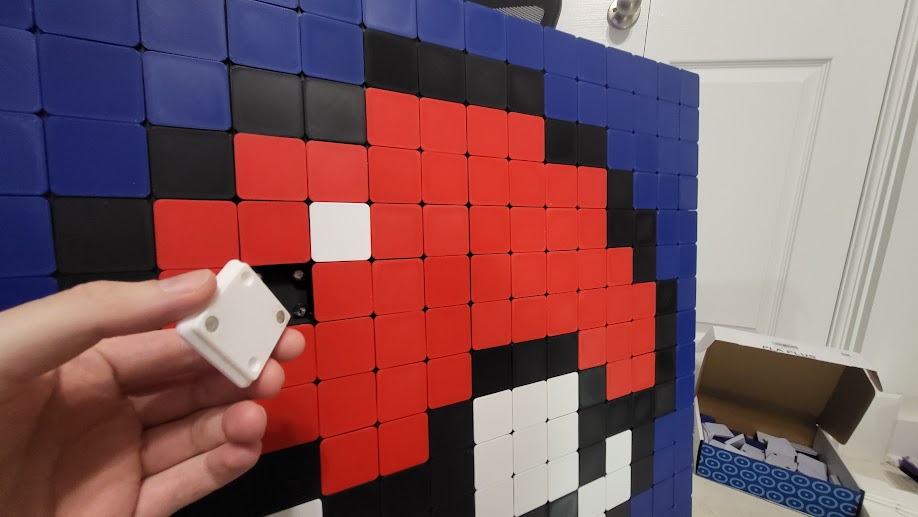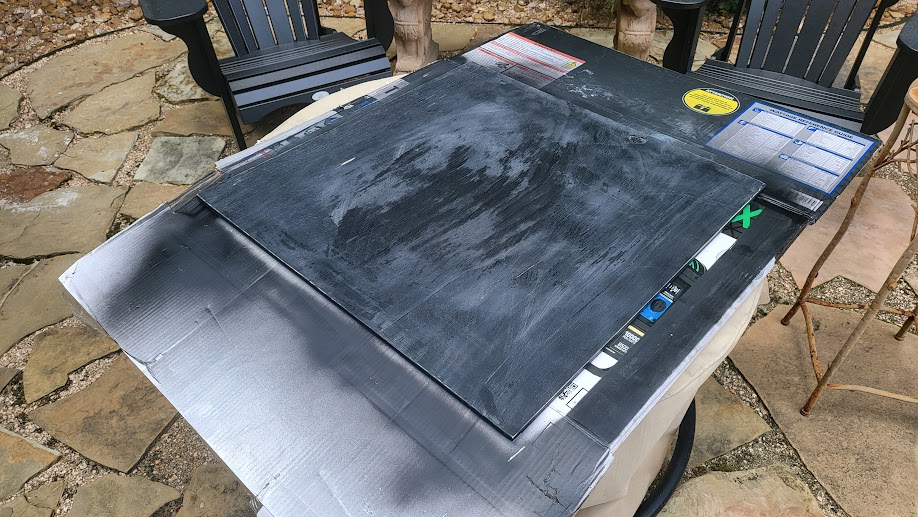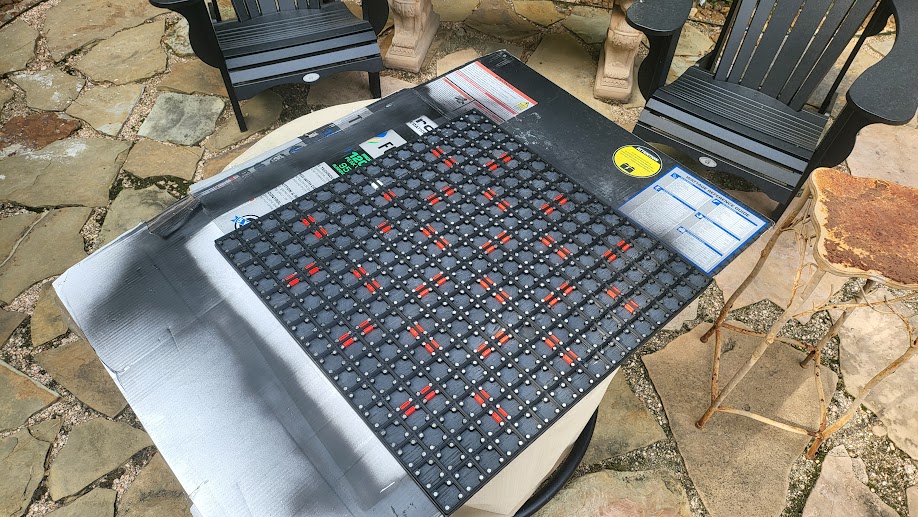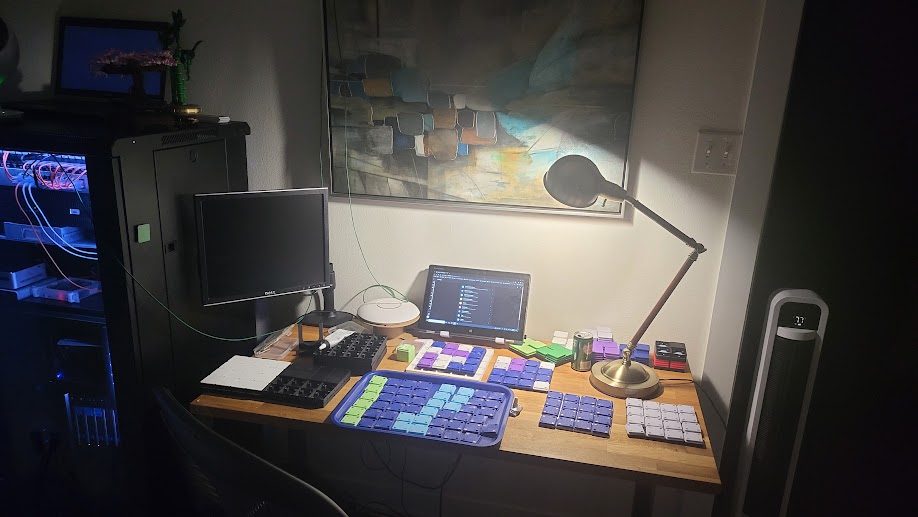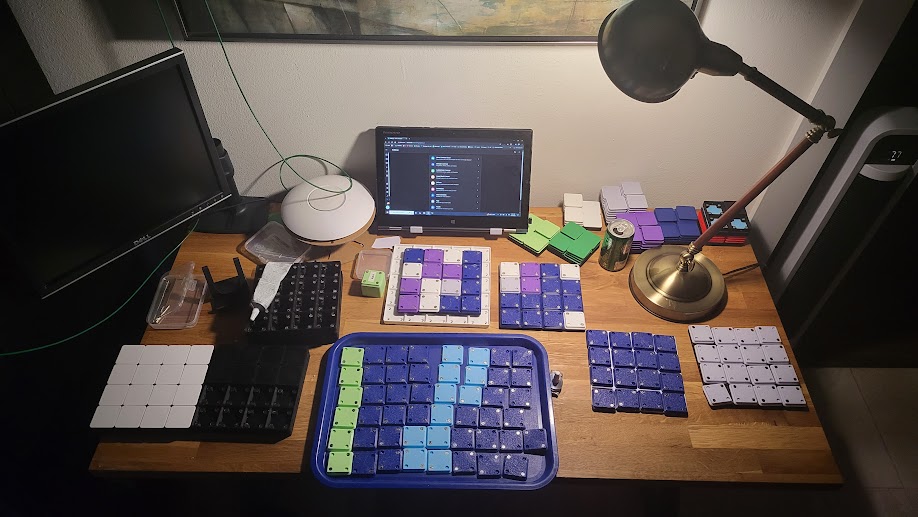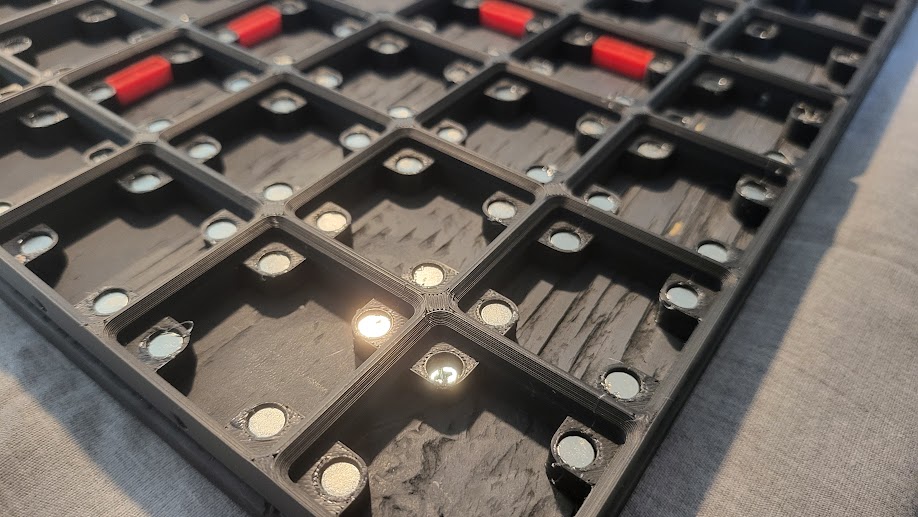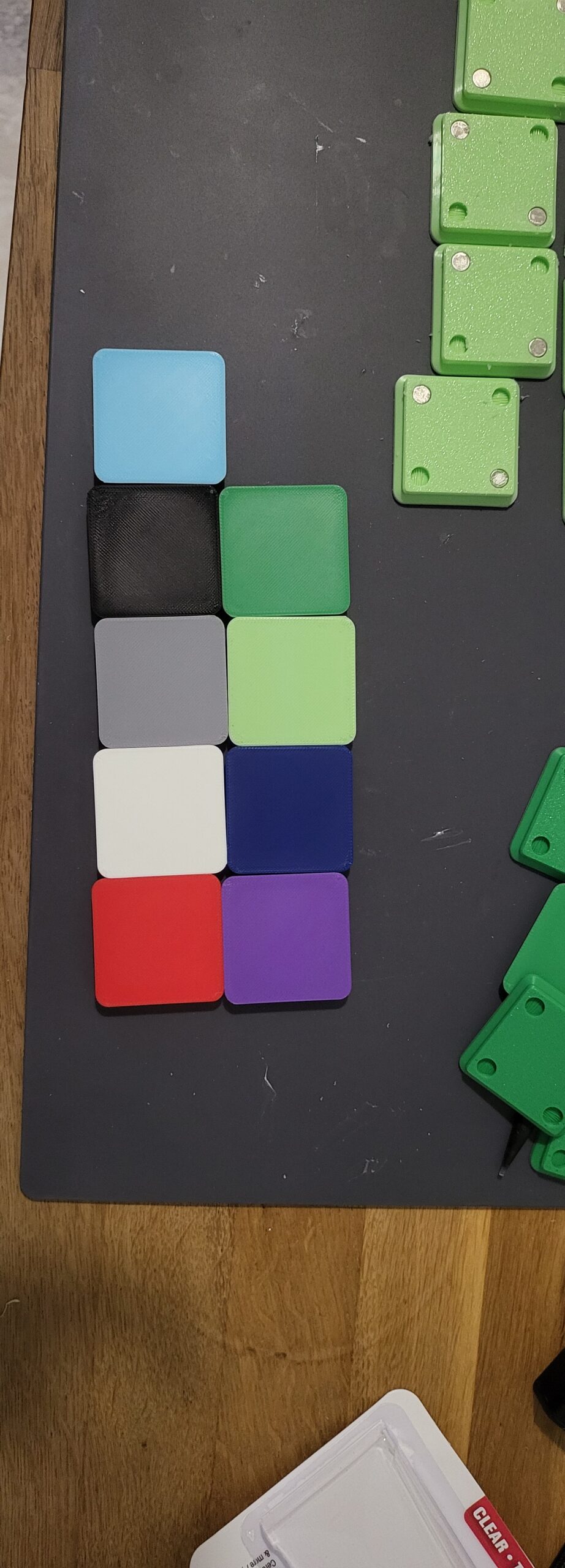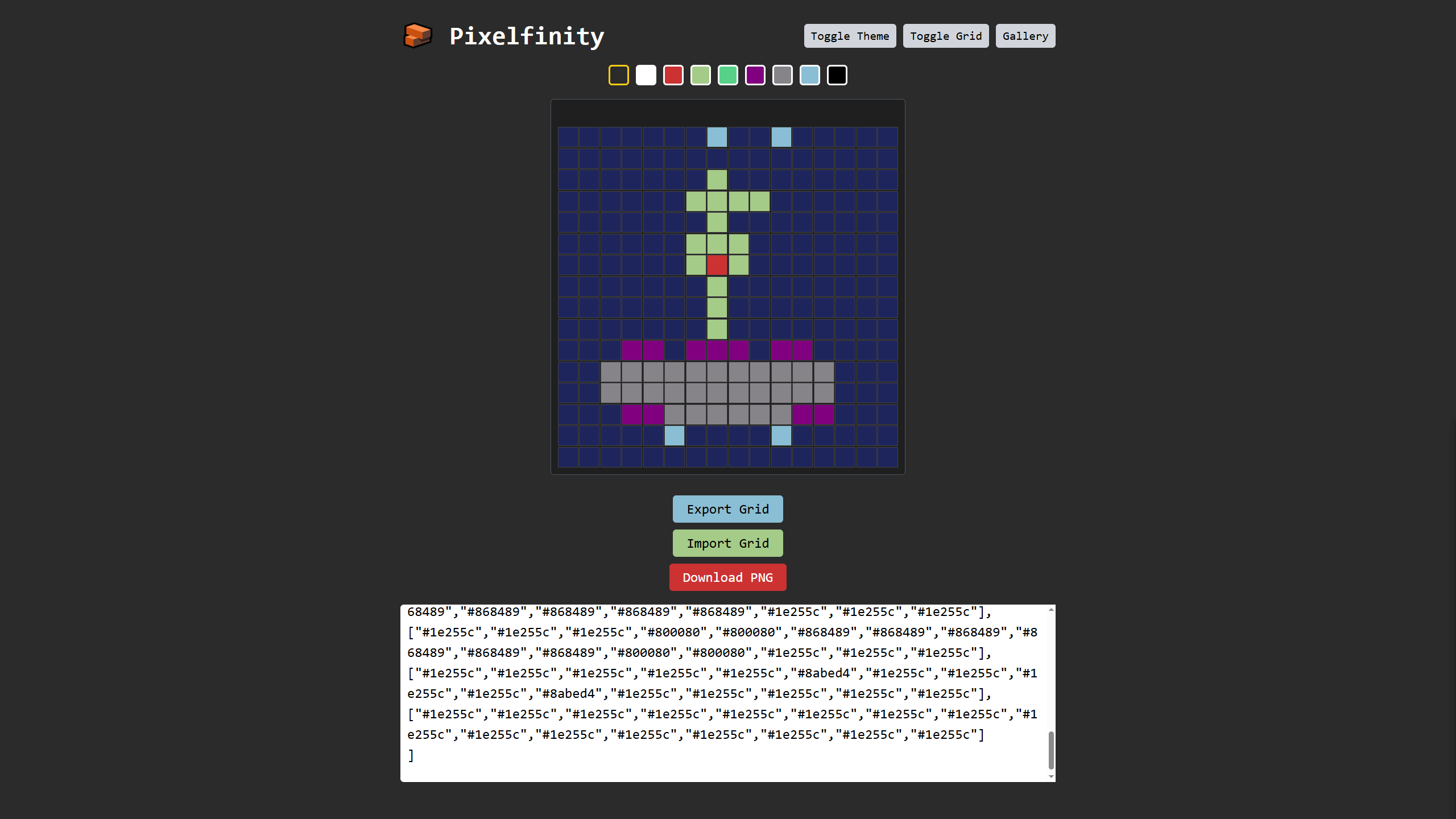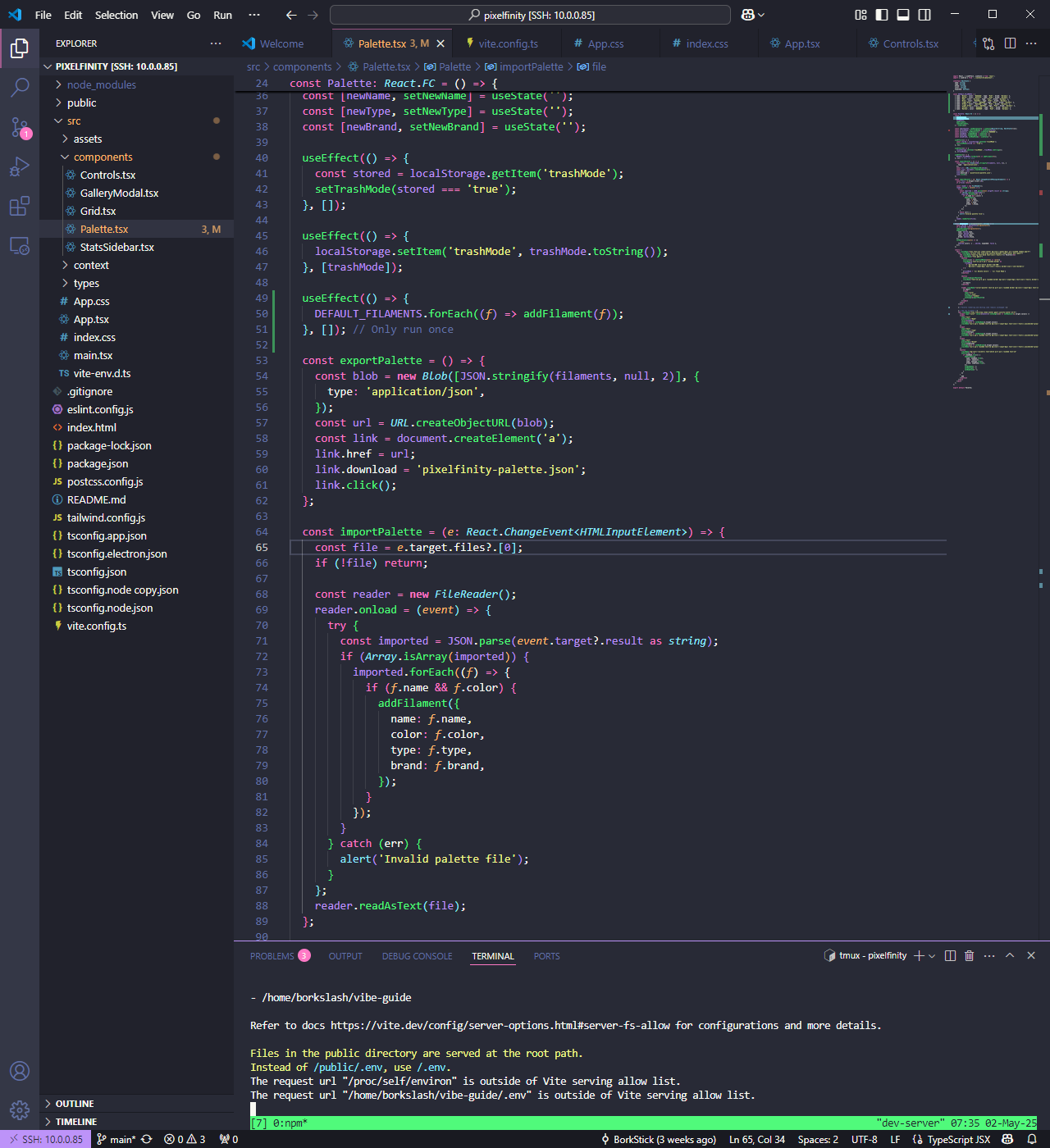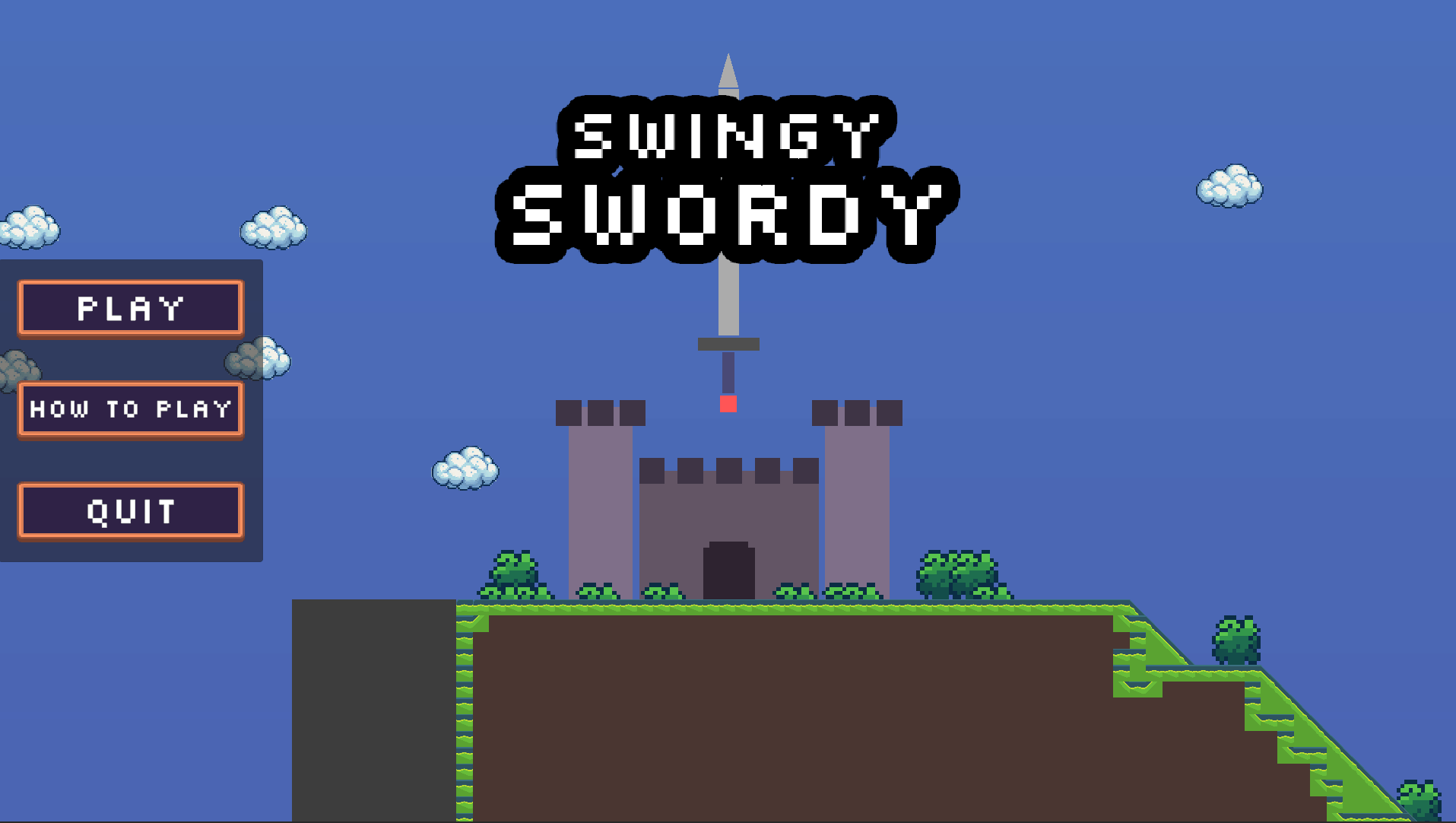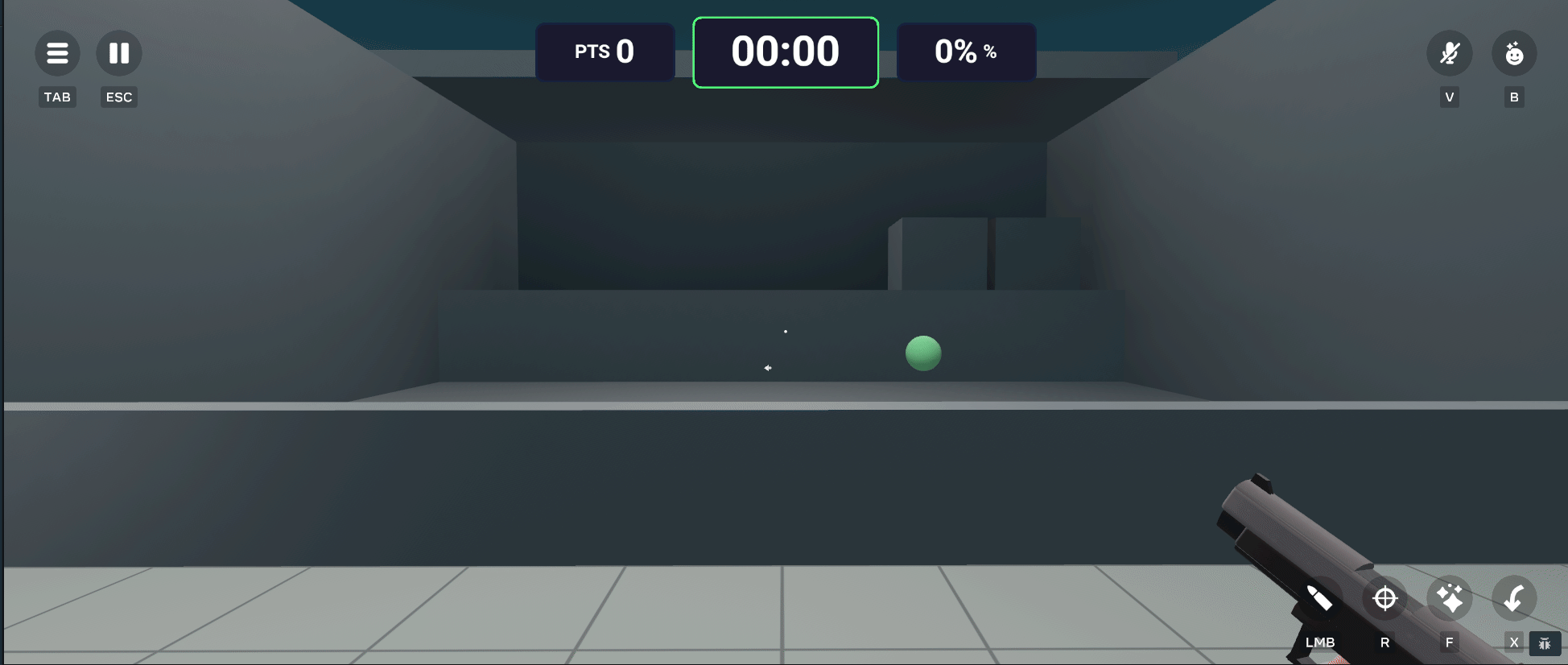Pixelfinity started as one of those happy accidents — the kind where you mess up a setting and suddenly unlock a whole new creative rabbit hole. I was messing around with the Gridfinity generator to make some 1×1 tool bins, accidentally set the height to zero, and got a paper-thin tile. Useless for storage… but kinda perfect for pixel art?
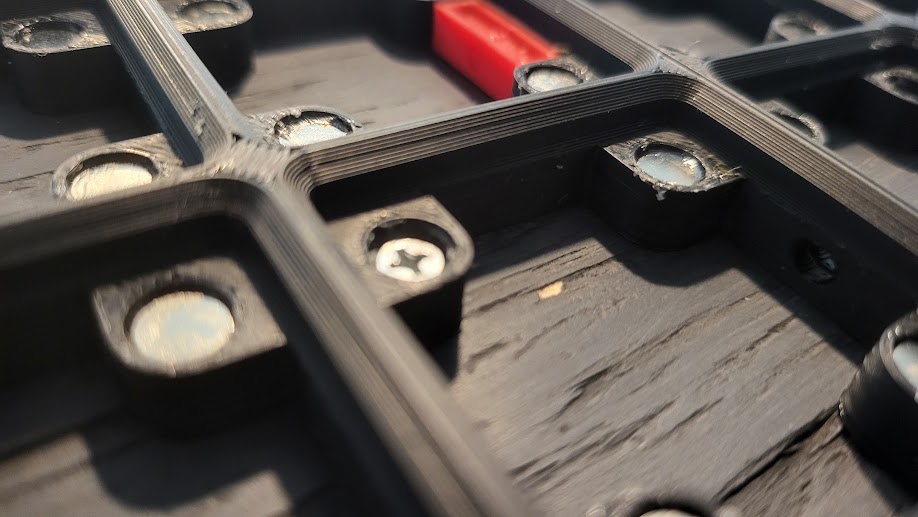
And just like that, I was off the rails.
It’s now a full-blown hybrid project: 3D printed pixel tiles that snap onto a magnetic grid, backed by a custom app I built to plan designs and track filament usage. I’ve been vibing my way through it ever since — printing, coding, cursing at magnets, and dreaming up ways to make it cooler.
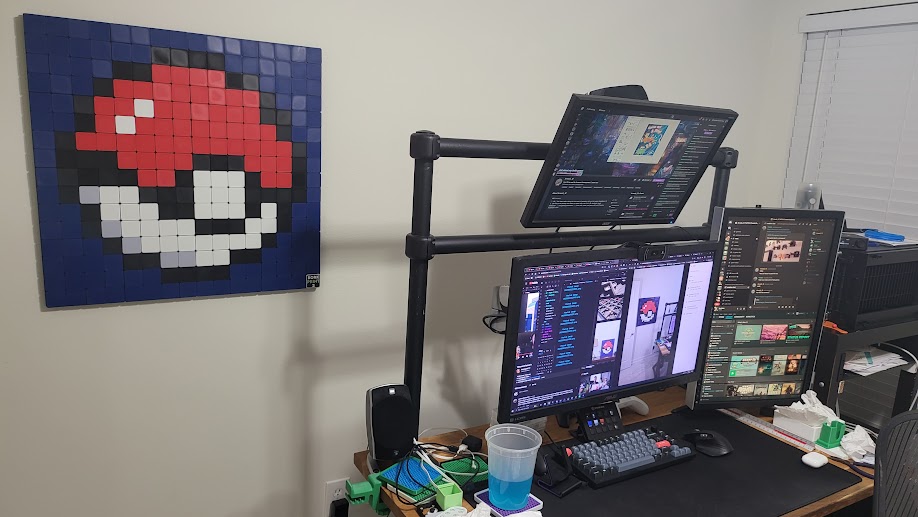
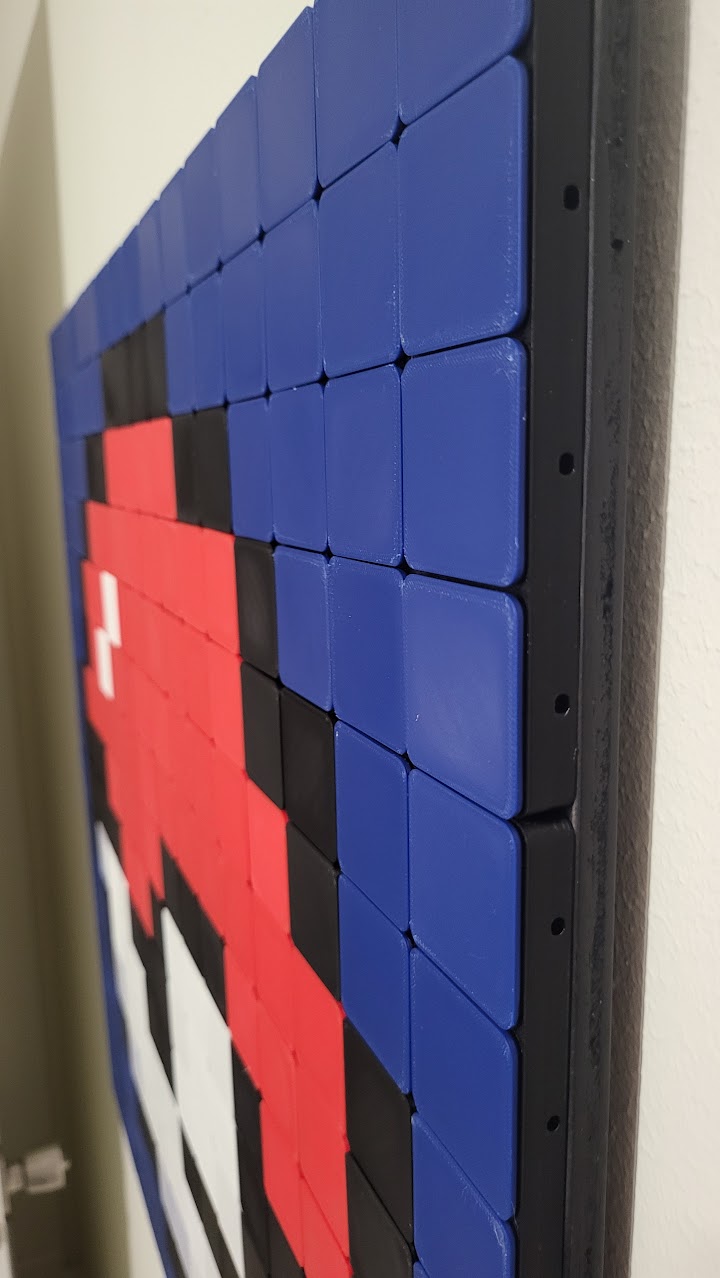
🛠️ Building the Physical Grid: From Tool Storage to Wall Art
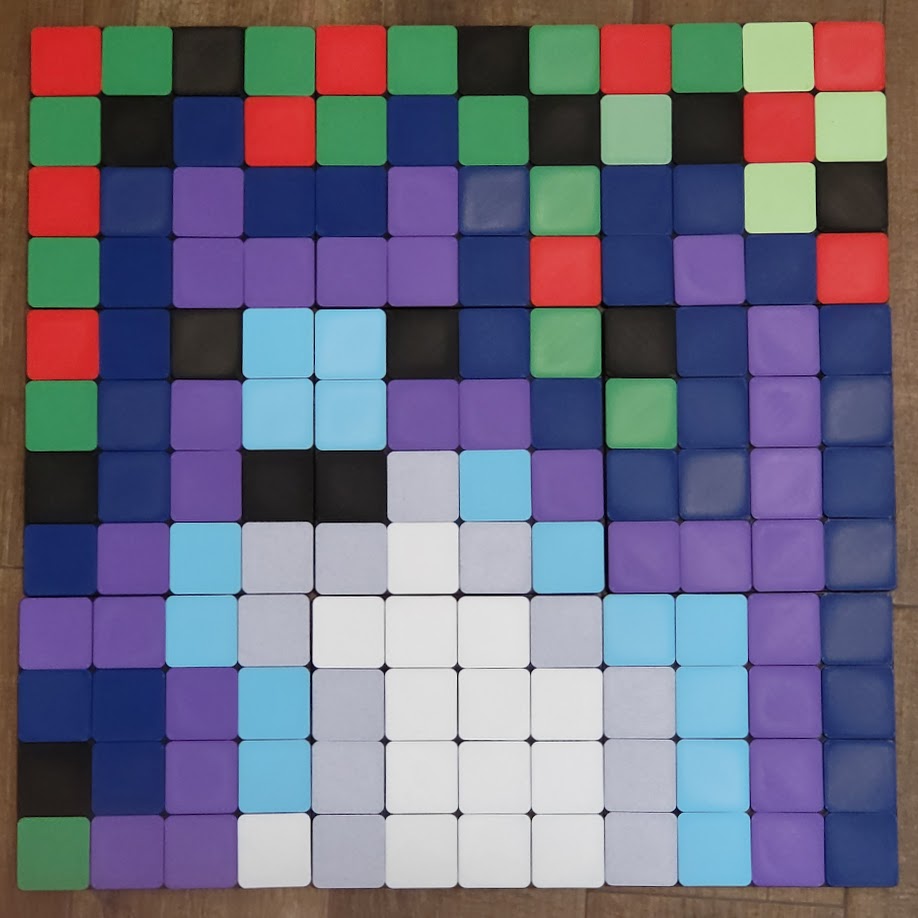
So the physical side of Pixelfinity is built entirely on top of the Gridfinity system — which, if you’ve never used it, is basically LEGO for tool organization. I hijacked that whole system and turned it into a canvas.
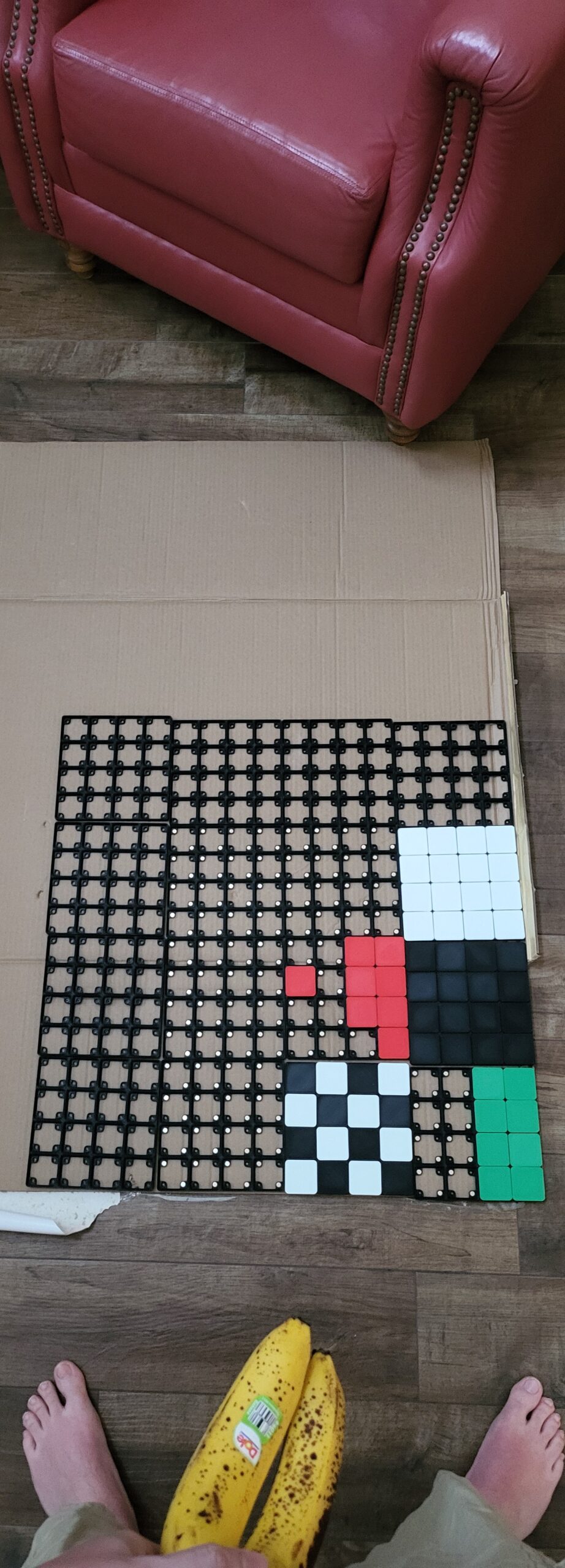
The Setup:
-
16×16 grid = 256 tiles total
-
Mounted on a spray-painted plywood board (~26.25in square)



-
Baseplates printed in 4×4 sections (Bambu Labs A1 Mini only has so much bed space)
-
Each pixel spot in the baseplate holds four 6mm x 2mm magnets = 64 magnets per plate = 1024 magnets for the 16×16 grid
-
Each tile uses two magnets
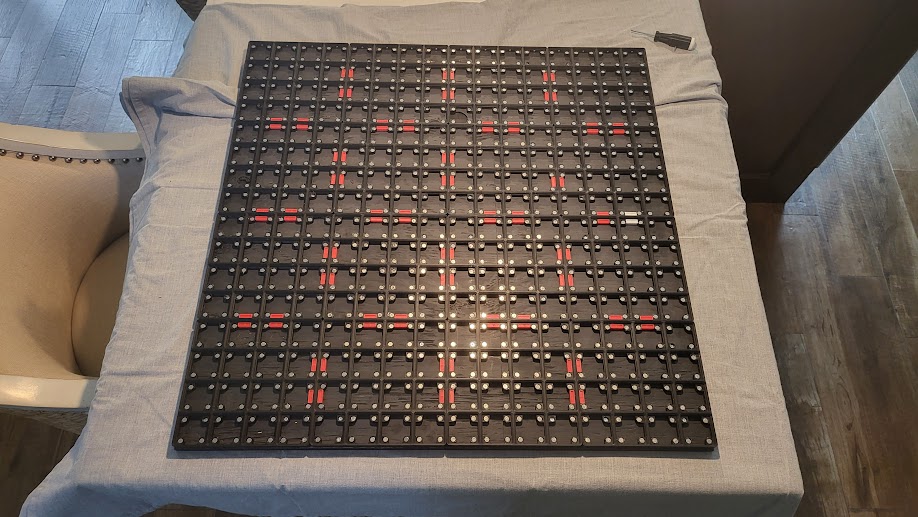
The Print Chaos:
-
Started with standard 1×1 prints


-
Found “connector” versions with holes and alignment points — much better
-
Discovered some were not press-fit… after printing a ton of them
-
Made a press-fitting tool to deal with the magnet madness
-
Glued 100+ magnets by hand with E6000 (the fumes were real)

-
Almost glued the magnets in backwards — twice
-
Nearly rage-quit and shou sugi ban’d the whole thing
[Insert Image: Magnet fitting tool]
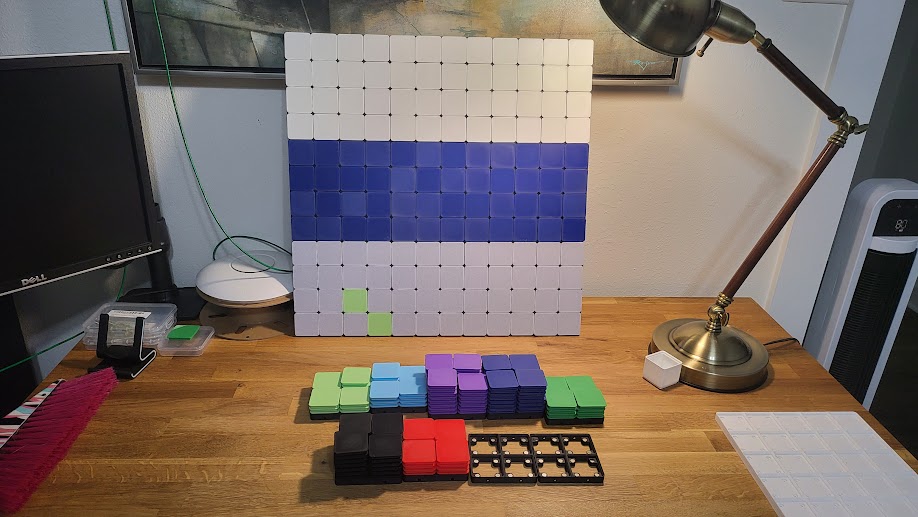
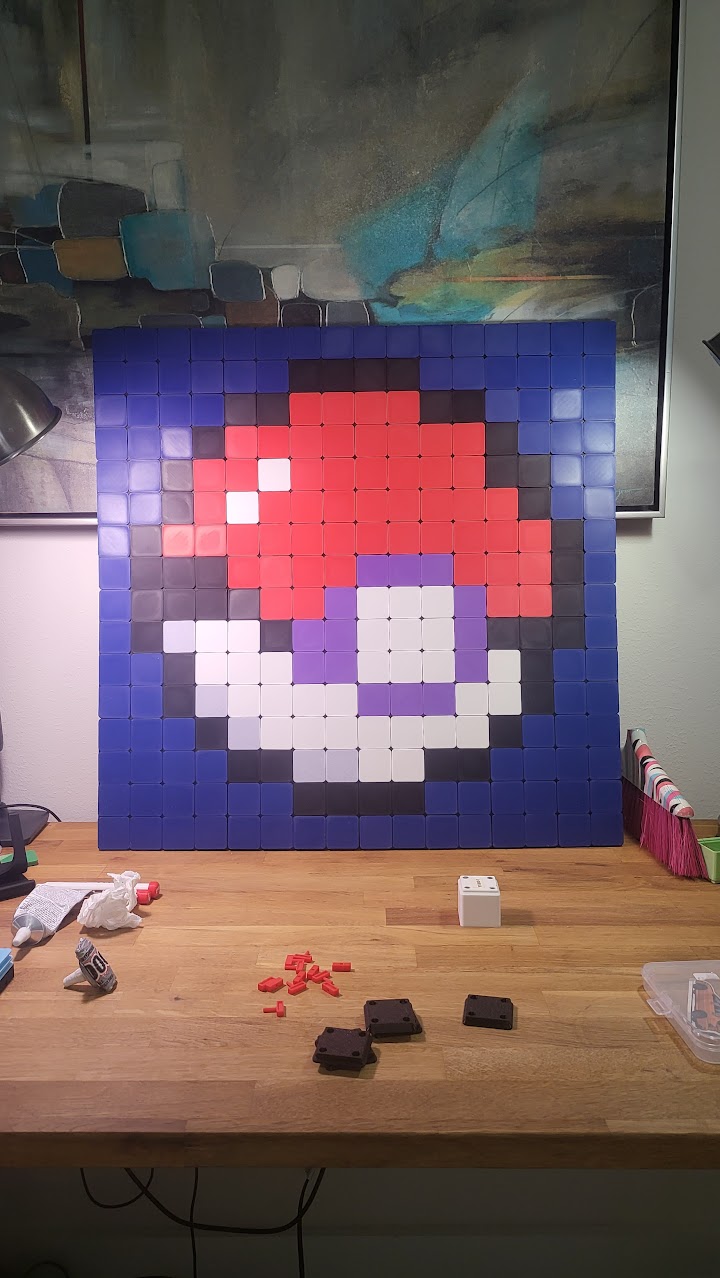
Color Palette (a.k.a. Filament Graveyard):
-
Red, green, light green, black, white
-
Marble, space blue, light blue, grey, purple
-
Bonus: great excuse to use up scrap filament and half-empty spools

Once the magnets were in and the workflow was dialed in, the printer did most of the heavy lifting. I just snapped tiles, cursed at glue, and rearranged stuff endlessly.
The magnetic thunk when a tile locks in? Legitimately addictive.
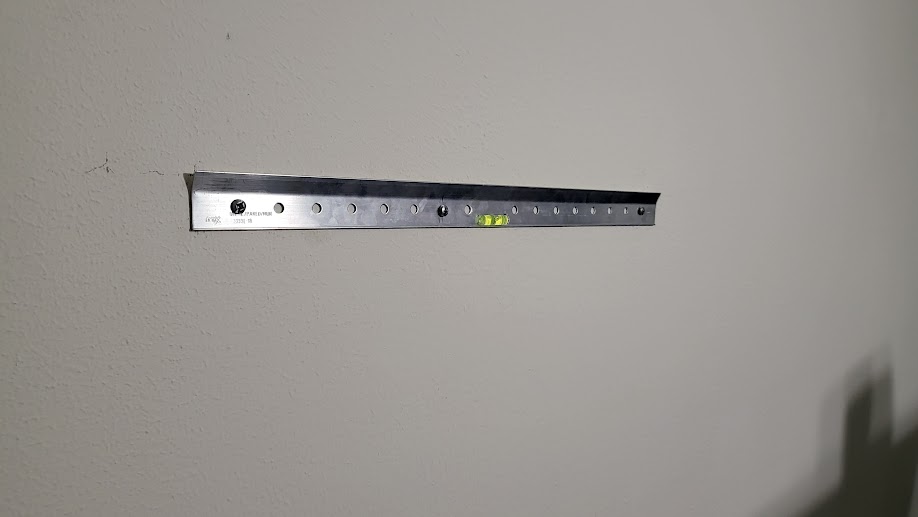
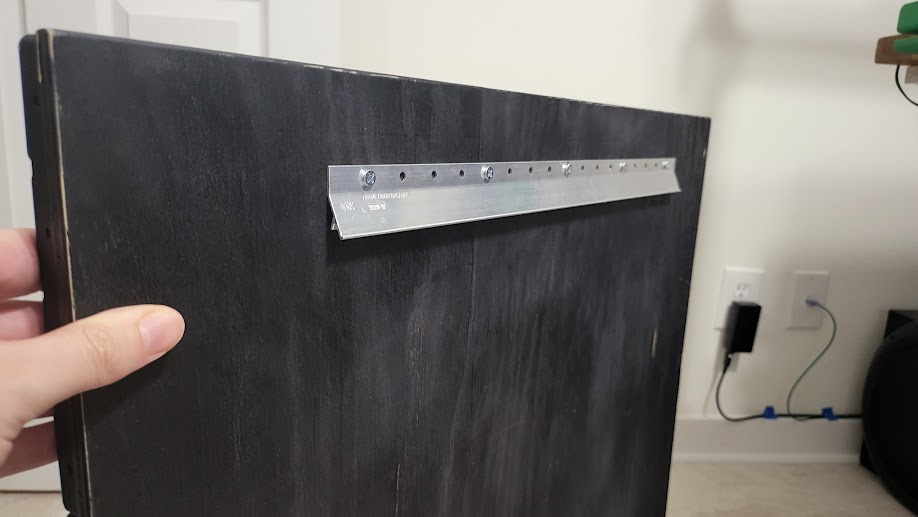
🌐 The Pixelfinity Helper App – I Vibe-Coded This Thing Into Existence
The app side of this project came from a simple need: I wanted a fast way to sketch out pixel ideas before committing to a print. Nothing fancy. Just a grid and some colors. So naturally, I ended up building a whole system.
https://pixelfinity.borked.tools/
[Insert Screenshot: Pixelfinity Helper interface]
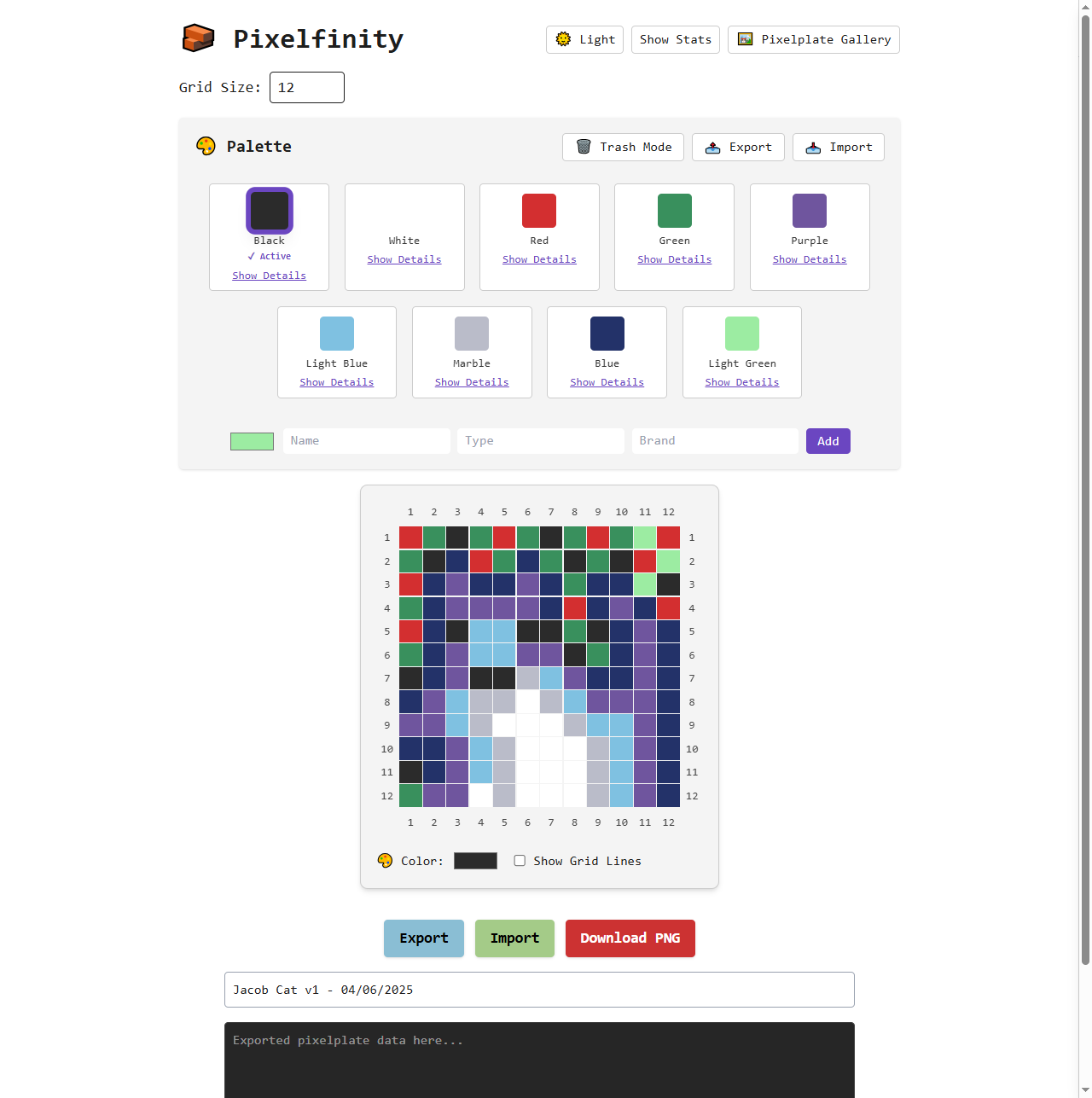
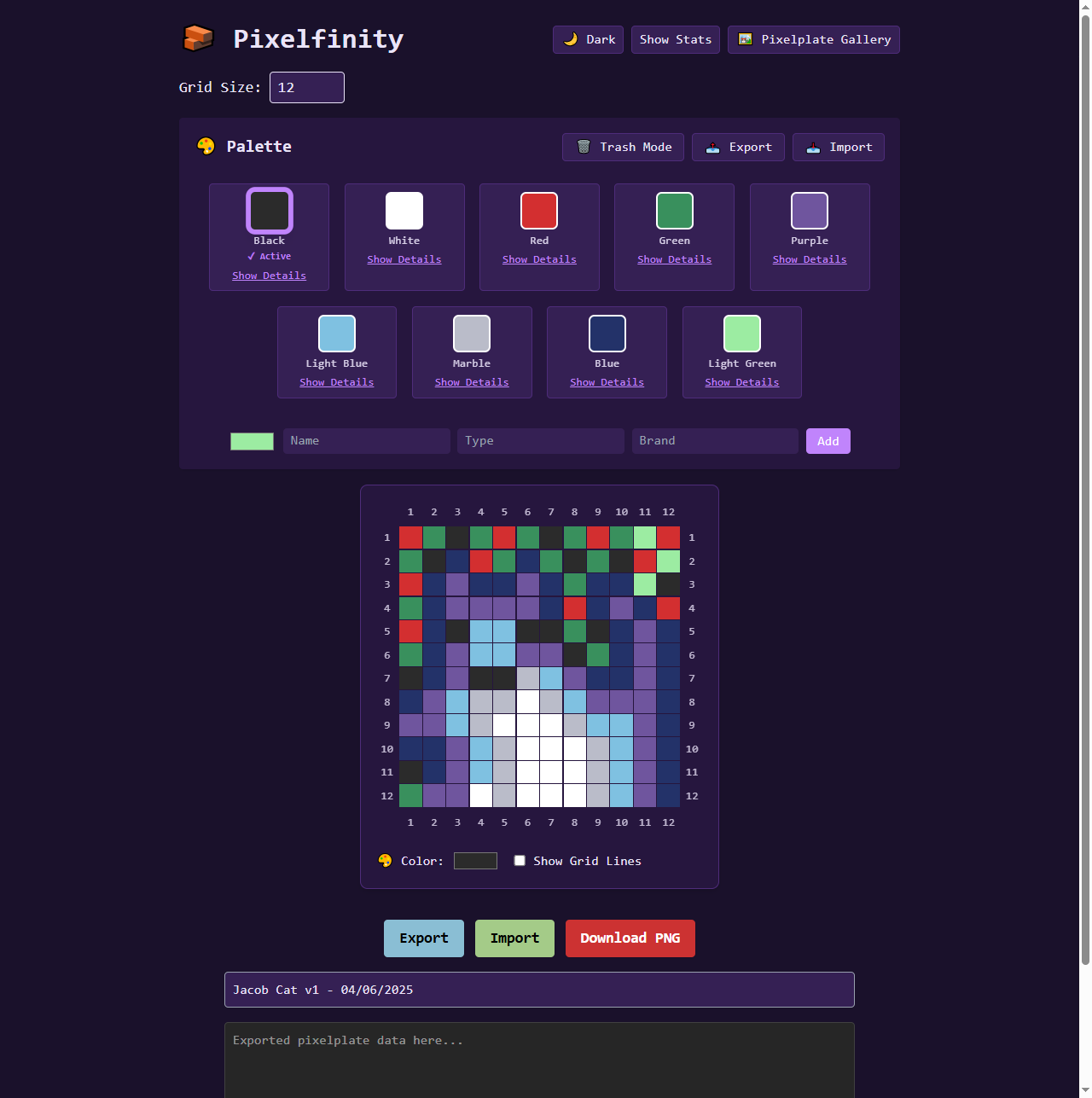
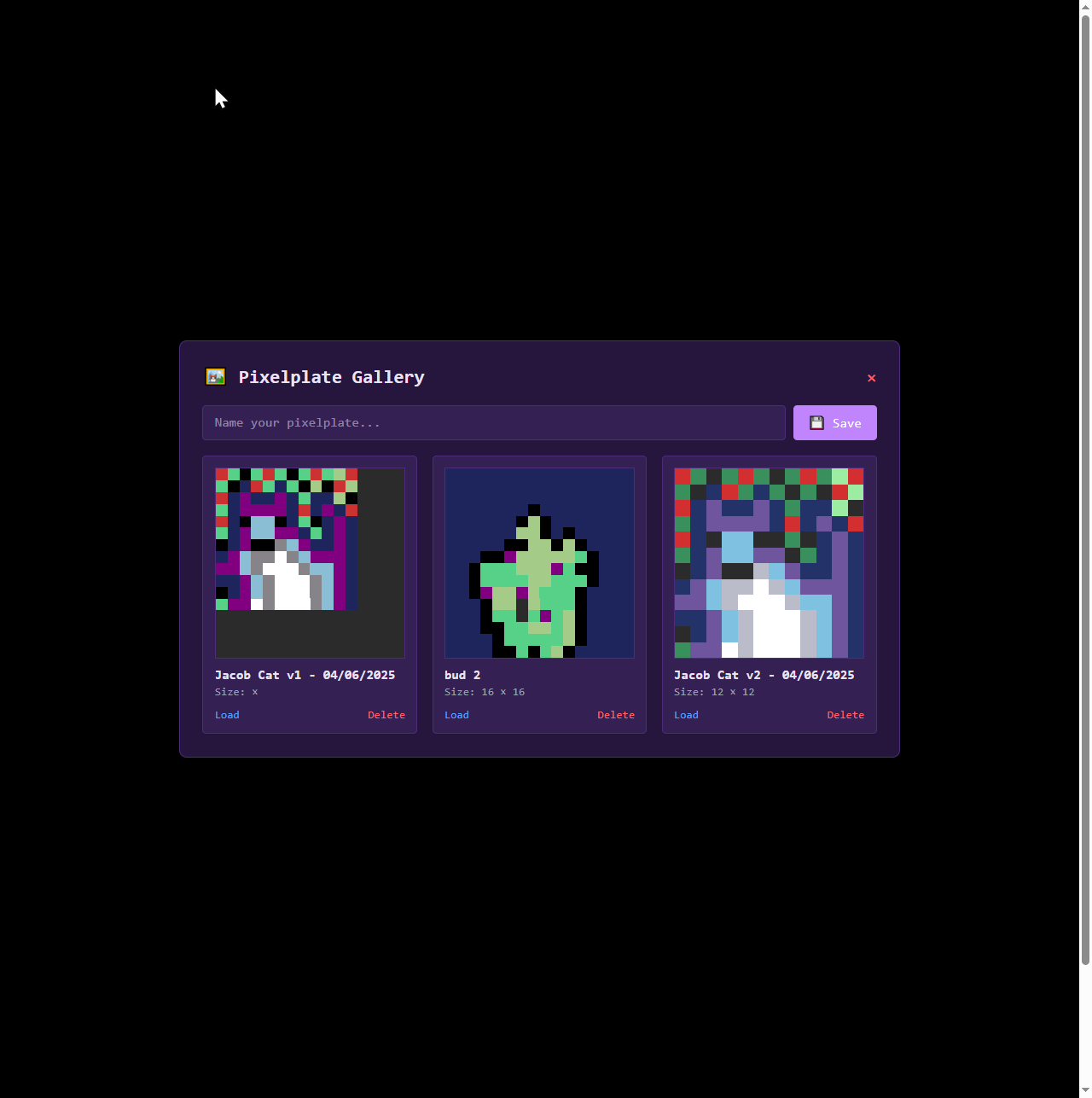
What It Does (So Far):
-
Custom grid sizes (16×16 default, but can go bigger)
-
Color palette system with names, filament brands, and types
-
Click-to-draw interface for placing tiles
-
Sidebar shows how many of each tile you’ve used
-
Exports PNGs (512×512) with name-based filenames
- Imports from chatgpt

-
Trash Mode: delete palette colors instantly (no pop-ups, no regrets)
It’s very much a “built-for-me” app, but it works surprisingly well for planning out prints.
Under the Hood:
-
Built with Vite + React + TypeScript + Tailwind CSS
-
Originally ran it locally with a firewall hole (super secure, 10/10 don’t recommend)
-
Moved it to a VM on my Proxmox cluster
-
Running Ubuntu, managed via
tmux, coded with VS Code Server

-
Pointed a dev subdomain to it and finally locked it down
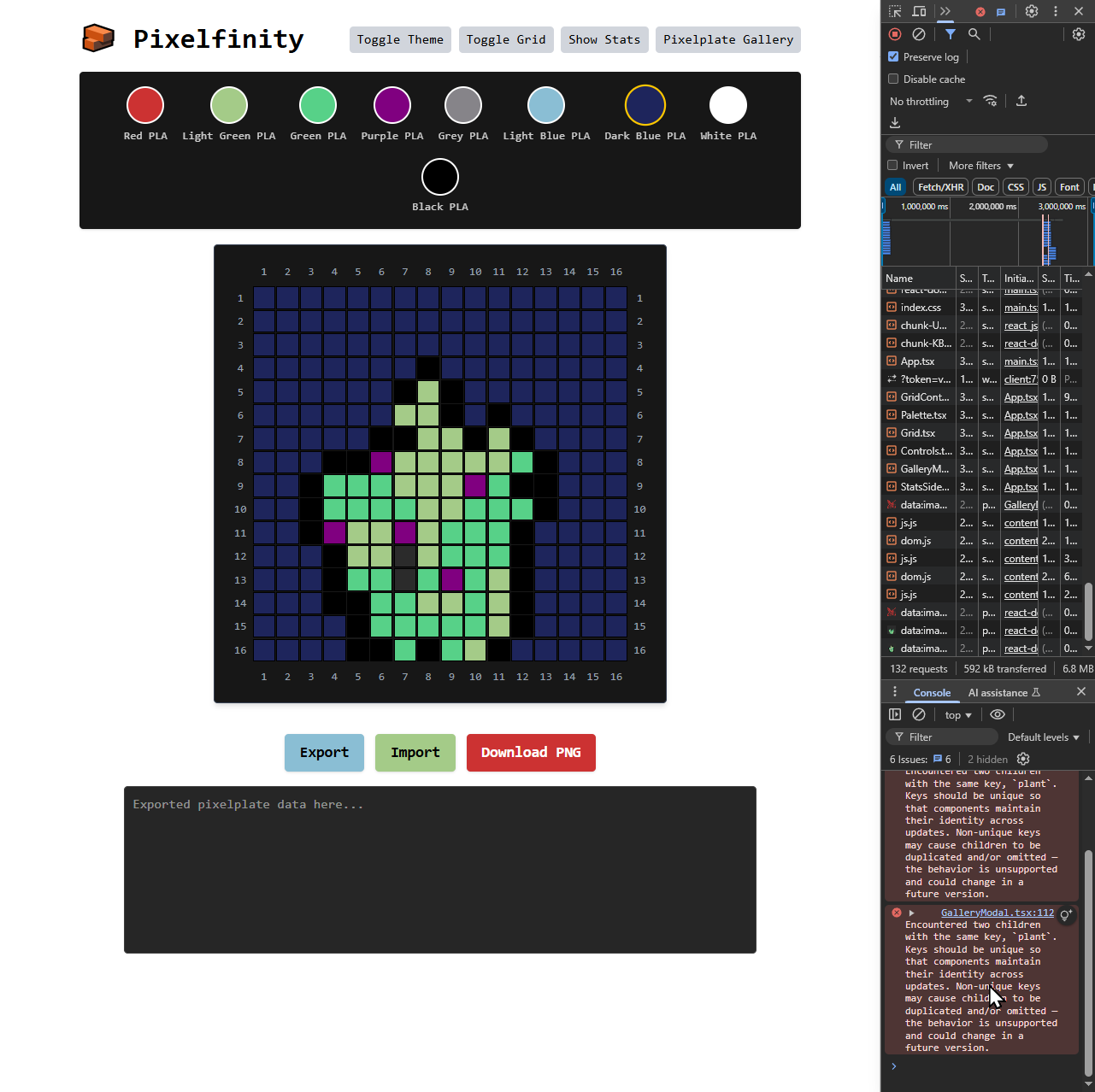
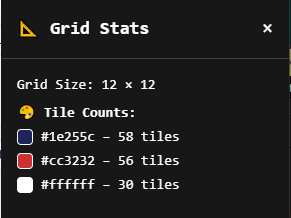
🚧 Still Janky, Still in Progress
Like most things I build, the Pixelfinity Helper is held together with duct tape and vibes. But it gets the job done. Here’s what’s still on the wish list:
-
Mobile and tablet support
-
Touch drawing mode
-
AI-powered pixel art generation
-
(Right now I just paste in output from ChatGPT)
-
-
Upload a photo of your real-world board and convert it into app format
-
CORS-safe backend API for future AI tools
💭 Future Experiments and Wild Ideas
This is the part where I start dreaming up stuff I’ll probably get distracted from halfway through — but maybe not:
-
Add a Raspberry Pi Zero with an e-ink display to show the current design or a QR code
-
Design a modular frame that connects through Gridfinity holes
-
Make more pixel designs (already made a Pokéball!)
-
Scale it up to a full mural — eventually
-
Expand my filament stash to go full chaos mode
-
Maybe release the STLs publicly if anyone else wants to try it
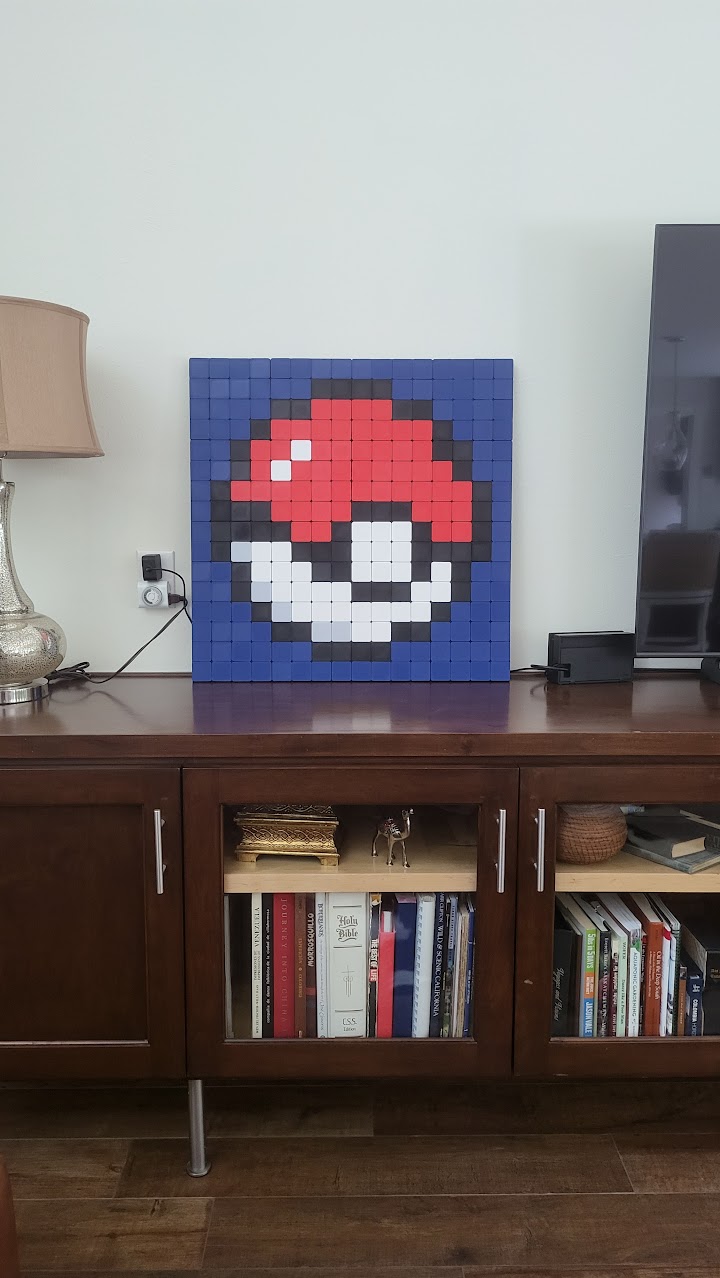
🙌 Just for Fun — But Could Be More
I made Pixelfinity for the hell of it. It was never meant to be anything more than a fun side project. But honestly? I’d be stoked if someone else printed a few tiles, stuck them on a wall, and made something weird and cool.
The system’s super modular, chunky in a satisfying way, and surprisingly expressive for something so simple. It blends pixel art with physical tinkering in a way that scratches every creative itch I have — from CAD to code to color matching.
For now, I’m just gonna keep printing dumb little designs and watching magnets snap into place.
